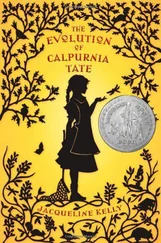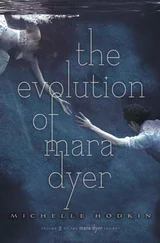Norm set up a sort of “company store” in the lab, where I could “buy” my treats. So instead of being given treats directly for the tasks I correctly performed, everything I ate (in the lab — of course I ate for free at home) had to be purchased, by me. With what , you ask? Norm minted special play money for use in the closed economy of the lab. He cut thin chips out of wooden dowels of varying diameters and stamped them with numbers indicating their value. The smallest chip was printed with the Arabic numeral 1, the next smallest with a 5, then a 10, then a 25, and the biggest and thickest wooden chip was stamped 100. Clever, no? Pennies, nickels, dimes, quarters, and dollars. They were different colors, too, painted with thick bright monochromatic coats of paint. I seem to recall the pennies were red, the nickels blue, the dimes green, the quarters silver, and the dollars gold. The valuations of the different chips took me several weeks of instruction to fully grasp. When Norm was reasonably sure I understood the chips’ value relationships, my rewards in the lab were no longer doled out in the form of raw goods, but in liquid holdings, with these idiotic colorful chips that I could later use to purchase food items from the company store, when I wanted to eat something. After that, whenever I performed a task correctly — sorting the items correctly, responding correctly to spoken commands to manipulate the objects, correctly playing a computer game designed to teach me symbolic logic — I was rewarded with one of these chips. For simple tasks they usually gave me a penny, and for more complex ones they might give me a nickel or a dime. Then I could cash up by turning in lower denominations for the higher ones. I remember the gestalt moment when I grasped that just one of the quarters was equal in value to twenty-five of the pennies — even though it didn’t look that way, because there were obviously a lot more of them. Now that’s symbolic logic. They also furnished me with a personal “bank” to keep my earnings in, which was a cardboard shoebox with a slot cut in the lid for me to deposit my wages.
The second part of this system was the company store. The company store was made out of one of the lab tables pushed close to a wall to serve as a counter, behind which the food items were stored in cabinets and a little refrigerator, both locked, and a locking metal cashbox. I was not allowed behind the “counter.” Norm printed up big wobbly sheets of laminated paper with pictures of all the items that could be purchased at the store, with their prices printed above the pictures. A “menu.” When I wanted to buy something, I walked up to the counter with my “money,” pointed at the picture of what I wanted from the “menu,” paid up, and then they gave me my food. I even clearly recall (or may as well) the prices:
1 raisin
1¢
1 grape
1¢
1 regular M&M
1¢
1 peanut
1¢
1 almond
1¢
1 cashew
1¢
1 small handful of peas
1¢
1 small handful of blueberries
1¢
1 small handful of raspberries
1¢
1
peanut
M&M
3¢
1 Milk Dud
3¢
1 cube of caramel
3¢
1 strawberry
3¢
1 plum
5¢
1 apricot
5¢
1 carrot
5¢
1 Reese’s Peanut Butter Cup
5¢
1 bite-size candy bar (Snickers, Milky Way, etc.)
5¢
1 peach
10¢
1 apple
10¢
1 orange
10¢
1 pear
10¢
1 marshmallow
10¢
1 hard-boiled egg
25¢
1 banana
25¢
1 full-size candy bar (Snickers, Milky Way, etc.)
25¢
1 cup of yogurt
50¢
1 hot dog
50¢
1 Popsicle
50¢
1 Fudgsicle
50¢
1 meatball
50¢
1 mango
50¢
1 cupcake
50¢
I suppose Norm’s introduction of a capitalist system to the small society of the lab had its desired effect on me. It took me very little time to build a psychological association of the monetary chips with a sense of inherent goodness — to see them as precious, even. I became miserly. I deliberately ate less so that I could save more chips. I came to desire the chips more than I had ever desired the little bits of food that were to be consumed immediately — because the more chips I had, the more potential goods I knew I had the purchasing power to acquire. I did always reliably want their filthy little monies. I horded them in my shoebox. I loved to dump it out and look at them, admiring my wealth, then close the lid of my bank and pick up each chip and put them back in the box, dropping them through the deposit slot one by one.
Nor did it take long for the scientists to begin using the chips as bribes. If they wanted me to participate in a certain experiment, if they wanted me to come to a certain area for some reason, if they wanted me to quit throwing a fit, to quit flailing or biting or screaming and shut up and behave for once — every time I was being unruly or obstinate, they would offer me one of the chips. They’d usually start the bidding with a 5¢ chip, and if it didn’t work — if I couldn’t be bought that cheaply — they would increase the denomination of their offer. In such instances I usually wouldn’t settle for less than a shiny silver 25¢ chip. Some of the lab workers began to grumble that the introduction of this system had been a terrible idea, that it had the unintended effect of perversely rewarding negative behavior. Then I suppose Norm would remind them that the little wooden chips were actually effectively worthless, so they might as well use them as bribes, or put them toward whatever end necessary. (Here I would like to remind Norm that the very same could be said for human money.) Paying me off was simply the easiest way to calm me down when I was upset. So naturally I began to deliberately throw fits in order to incite their bribery. I suppose they spoiled me.
Thus the experiments continued, month after month and season after season, teaching me the mores of human society while simultaneously twisting up and corrupting my soul. Was my corruption merely a by-product of my enculturation? — or was it in fact an essential part of the process?
While this economic system eliminated the ticklish problem of the food-rewards’ value fluctuating with the state of my appetite, it failed to fix the bigger problem. It alleviated the symptom but did not cure the disease. This disease of Norm’s was a fundamental failure of understanding. It was his unshakable faith in the usefulness of behavioristic training. Yes, I realize that behaviorism works perfectly well for training pigeons in boxes to peck at discs. But I am not a pigeon. Language is not a disc in a box. The idea that one can teach language to a rational creature by using essentially Skinnerian methodology is patently absurd. That would be like giving food to a baby only if he says a word correctly, and punitively starving him if he babbles incoherently. Try that at home. I doubt it will make your baby learn to talk any more efficiently. Second languages we may learn through deliberate instruction — badly. Nobody ever really learns anything they do not want to learn. We learn our first language through immersion, through our fascination, through love. Mere vocabulary is not language, Norm. Syntax is not language. Grammar is not language. To define these things as necessary properties of capital-L Language (whatever that is) is like defining eating exclusively as eating at a table with a fork and a knife — that’s not a holistic definition of eating ; that’s just good manners.
But when an infant gazes into his mother’s eyes and speaks a first word — even if he has no clue what it “means”— that is language. The child’s first word is not a symbol. It is not a representation, it is not a sign impregnated with abstract meaning, it is not a signifier and not a semiote. It is not a thin coating of signification painted over the surface of an a priori extant concept, suddenly revealing its definition like the act of throwing a sheet over something invisible. It is not a representation. Before a word becomes any of these things, it is simply an act . It is not a naming of the world, but rather the world’s creation.
Читать дальше












